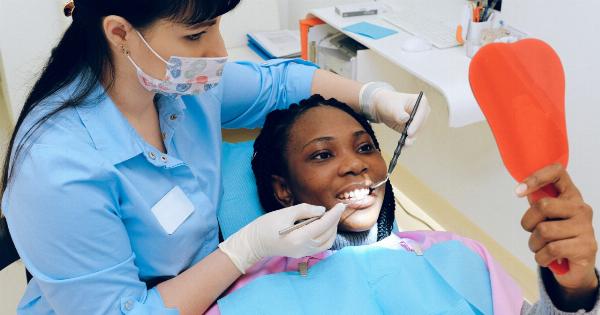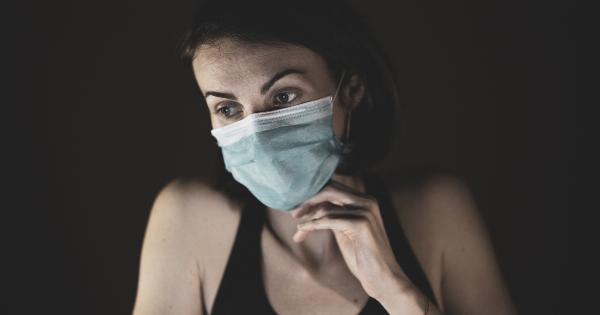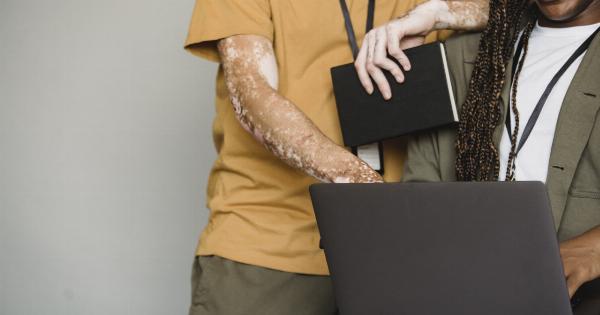Scabies is a highly contagious skin disease caused by tiny mites called Sarcoptes scabiei. These mites burrow into the skin and lay eggs, leading to intense itching and a rash.
Scabies is easily spread through close physical contact or by sharing personal items such as clothing, bedding, and towels.
Symptoms of Scabies
Scabies symptoms usually appear several weeks after initial infestation. The most common symptoms of scabies include:.
- Severe itching, especially at night
- Rash or bumps on the skin, often in the form of small red dots
- Thin, irregular, grayish-white lines on the skin caused by the mites burrowing
- Blisters or pimple-like bumps
- Sores caused by scratching
Scabies can affect any area of the body but is most commonly found in the folds of the skin, such as the wrists, elbows, armpits, genitals, and buttocks.
How Scabies Spreads
Scabies spreads through direct skin-to-skin contact with an infected person. It can also spread by sharing personal items that have come into contact with the mites, such as clothing, bedding, and towels.
The mites can survive outside the human body for up to 48 hours, making it possible for them to spread through contaminated surfaces.
Treatment for Scabies
If you suspect you have scabies, it is crucial to seek medical attention for proper diagnosis and treatment. Scabies can be treated with topical medications prescribed by a doctor.
These medications usually contain scabicide, which kills the scabies mites and their eggs. It is important to follow the prescribed treatment plan and thoroughly clean your environment to prevent re-infestation.
Additionally, it is important to notify close contacts and those who may have come into contact with the infected person to seek medical evaluation and treatment if necessary.
Treating all individuals who may be infected or at risk helps prevent further spread of scabies.
Preventing the Spread of Scabies
Preventing scabies requires taking several precautions and practicing good hygiene. Here are some ways to stop the spread of scabies:.
1. Avoid close physical contact
Limiting close physical contact with individuals who have scabies reduces the risk of transmission. This includes avoiding hugging, shaking hands, or engaging in activities that involve direct skin-to-skin contact.
2. Maintain personal hygiene
Regularly washing your hands with soap and water can help reduce the risk of scabies transmission. Pay attention to clean and wash areas where mites are commonly found, such as between fingers and under fingernails.
Keep your nails short to minimize the mites’ ability to survive.
3. Avoid sharing personal items
Scabies mites can survive on clothing, bedding, and towels for a short period. Avoid sharing these personal items to prevent the spread of scabies.
If you suspect shared items may be contaminated, wash them in hot water and dry on high heat to kill the mites.
4. Thoroughly clean and vacuum your home
Scabies mites can live for a short time outside the human body. To prevent re-infestation or spread, thoroughly clean your home, paying attention to frequently touched surfaces, bedding, and clothing.
Vacuum carpets, rugs, and upholstery regularly to remove any mites or eggs that might have fallen off.
5. Treat infected individuals
It is crucial to seek medical treatment for infected individuals to stop the spread of scabies. Follow the prescribed treatment plan and complete the course of medication to ensure all mites and eggs are eliminated.
Avoid close physical contact until the treatment is completed and symptoms have resolved.
When to Seek Medical Help
If you suspect you have scabies, it is best to consult a healthcare professional for an accurate diagnosis and appropriate treatment. It is also important to seek medical help if:.
- Your symptoms are severe or worsening
- You have open sores or secondary infections due to scratching
- Pregnant, nursing, or have a weakened immune system
- Children under the age of 2 are affected
Medical professionals can provide personalized advice and treatment options based on your specific situation.
Conclusion
Scabies is a highly contagious skin disease caused by tiny mites that burrow into the skin and lay eggs. It is easily spread through close physical contact or sharing personal items.
Prompt diagnosis and treatment are crucial to prevent further spread and alleviate symptoms. By practicing good hygiene, avoiding close contact, and seeking medical help, you can effectively stop the spread of scabies and protect yourself and others from this highly contagious disease.





























